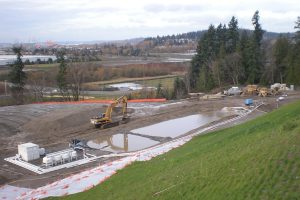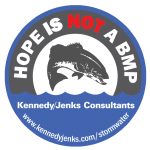The new Washington Construction Stormwater General Permit (Permit) has arrived and is now in effect! Most provisions of the new Permit are similar to the 2010 permit, but new definitions, clarifications, and provisions for Low Impact Development (LID) facilities are included and potential issues arising from onsite contamination are significant.

The most significant change is new language in Section S2, requiring applicants to notify the Washington State Department of Ecology (Ecology) in their Notice of Intent (NOI) of any known contamination (i.e., contaminated groundwater and/or contaminated soils) associated with the construction activity. Applicants must provide “readily available” information about the nature and extent of the contamination and propose pollution prevention Best Management Practices (BMPs) to treat and/or control the discharge of contamination in construction-related stormwater.
The impact from these changes is yet to be seen, but we anticipate an increase on permitting timelines, NOI review time, sampling and testing requirements, and overall project costs. Based on the contamination information provided, Ecology may determine that the site is not eligible to be covered by the Permit and instead require the contractor or developer to obtain an individual NPDES permit, which would invariably lengthen permitting acquisition times and costs.
The Permit identifies contaminants of concern as those that do not occur naturally at the site and/or are listed in WAC 173-340-200 (including almost everything), and it sets reporting levels at anything above natural background levels. Although Ecology is not requiring sampling or testing prior to submitting a NOI, some applicants may feel such testing would be prudent to expedite the NOI review process when site characterization information is limited and existing contamination is suspected.
The Permit also does not specify when additional testing and monitoring will be triggered or required. It instead relies on Ecology issuing Administrative Orders (AOs) on a site-by-site basis to establish these requirements. As such, the Applicant will not know if additional sampling, testing, and monitoring will be required until an AO is received. The impacts to project approval time are as yet unknown but are a major concern given the short dry-weather construction window present in the Pacific Northwest.
Other important changes to the Permit include new language concerning LID facilities, water-only based shaft drilling, and pH sampling for sites with recycled concrete. KJ Consultants has staff who are experienced with the Permit and can help interpret how these changes will impact your project.
Remember: Hope is not a BMP.
If you are interested in more information on Kennedy Jenks, don’t forget to subscribe to our blog!


